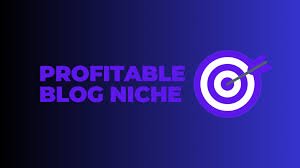Blogging has evolved from a simple hobby into a powerful platform for sharing knowledge, building communities, and even earning income. Whether you want to document your personal journey, establish your brand, or connect with others who share your passions, blogging offers endless possibilities. However, starting a blog from scratch can seem overwhelming. With the right approach, you can turn your ideas into an engaging blog that attracts readers and grows over time. In this post, we’ll explore the key basics to help you start blogging today and build your blog from the ground up.
1. Define Your Purpose and Niche
Before jumping into the technical aspects of blogging, it’s essential to identify why you want to start a blog and what topics you’ll focus on. Having a clear purpose will guide your content and keep your blogging journey on track.
Your blog’s niche defines the specific area of interest you’ll write about. It can be anything you’re passionate about, such as health, technology, food, travel, or personal development. The key is to choose a niche that you are genuinely interested in and have some knowledge about. Blogging about something you’re passionate about will make it easier to create consistent, valuable content.
Consider the audience you’re targeting. Are you writing for beginners in your niche, or are you providing more advanced insights? Tailoring your content to a specific audience will help you stand out in a crowded blogosphere.
2. Choose the Right Blogging Platform
One of the first decisions you’ll need to make is selecting a blogging platform. The platform you choose will determine how your blog is managed, customized, and monetized. There are several options available, and each has its pros and cons.
- WordPress.org (Self-hosted): This is the most popular blogging platform. WordPress.org offers full control over your blog’s design, features, and functionality. You will need to purchase a domain name and a hosting plan, but this platform provides flexibility and scalability. It’s ideal if you want complete control over your blog’s future growth.
- WordPress.com: Unlike self-hosted WordPress, this platform takes care of hosting for you. It’s beginner-friendly but comes with limitations regarding customization, theme selection, and monetization options.
- Blogger: Owned by Google, Blogger is another free platform that allows you to start a blog quickly. While it’s easy to use, it lacks the flexibility and advanced features of other platforms like WordPress.
- Wix and Squarespace: Both of these platforms offer website-building tools with integrated blogging features. They are user-friendly and great for beginners but are not as customizable as WordPress.
Each platform has its strengths, so choose the one that aligns best with your goals and technical comfort level.

3. Choose a Domain Name and Hosting Service
Your domain name is your blog’s unique web address (e.g., www.yourblogname.com). When selecting a domain, try to keep it short, memorable, and relevant to your blog’s niche. If possible, use keywords related to your topic to help with SEO. Avoid using complicated names, and consider a domain that reflects your blog’s identity or your personal brand.
Once you have your domain, you’ll need a web hosting service. Web hosting is where your blog files are stored. Some popular hosting providers include:
- Bluehost
- SiteGround
- HostGator
- DreamHost
These hosting providers offer reliable performance, excellent customer support, and one-click WordPress installation. Many also provide free domain registration for the first year as part of their hosting package.
4. Design Your Blog
A well-designed blog helps create a positive first impression and keeps readers engaged. Fortunately, you don’t need to be a professional web designer to create an attractive blog. Blogging platforms like WordPress and Wix offer free and premium themes that are fully customizable. When selecting a theme, make sure it’s mobile-friendly, as a significant portion of internet traffic comes from mobile devices.
Key design elements to consider:
- Navigation: Your blog should have clear navigation, so visitors can easily find the content they’re looking for. A well-organized menu is crucial.
- Readability: Choose fonts and colors that make your content easy to read. Avoid using too many font styles or bright, clashing colors.
- Call-to-Action (CTA): Include CTAs that encourage readers to take action, whether subscribing to your newsletter, reading another post, or following you on social media.

5. Start Creating Content
Content is the heart of your blog. Your blog’s success largely depends on the quality and consistency of the content you produce. Write posts that offer value to your readers, whether it’s answering common questions, providing actionable tips, or sharing personal experiences.
Tips for writing effective blog posts:
- Focus on Quality: Your posts should be well-researched and offer valuable insights. Avoid fluff or overly generic content.
- Be Authentic: Let your personality shine through your writing. Readers appreciate authenticity and are more likely to return if they connect with you.
- Write Engaging Headlines: A compelling headline grabs attention and entices readers to click. Make sure your headlines are clear and communicate the value of the post.
- Use Visuals: Incorporate images, infographics, or videos to break up text and make your posts more visually appealing.
- Optimize for SEO: Use relevant keywords in your post titles, headings, and throughout the content to help your posts rank higher in search engine results.
6. Promote Your Blog
Publishing great content is just the first step. To attract readers to your blog, you’ll need to promote it effectively.
- Social Media: Share your blog posts on social media platforms like Facebook, Twitter, Instagram, and LinkedIn. Engaging with your audience on these platforms can help drive traffic to your blog.
- Networking: Connect with other bloggers in your niche by leaving thoughtful comments on their blogs or sharing their content. Building relationships within your blogging community can help grow your audience.
- Email Marketing: Set up an email list from the beginning. Offer visitors an incentive, like a free ebook or checklist, in exchange for their email addresses. Use tools like Mailchimp or ConvertKit to send newsletters and keep readers engaged with your latest posts.

7. Track Your Progress
To grow your blog, it’s essential to measure your performance. Google Analytics is a free tool that provides valuable insights into your blog’s traffic, audience demographics, and user behavior. By analyzing your blog’s data, you can identify which content resonates with your audience and adjust your strategy accordingly.
8. Monetize Your Blog (Optional)
Once your blog gains traction, you may want to monetize it. Here are a few common methods:
- Affiliate Marketing: Promote products or services and earn a commission for each sale made through your referral links.
- Sponsored Posts: Partner with brands to write posts that promote their products or services.
- Selling Products or Services: You can sell your own products, such as eBooks, online courses, or physical merchandise, directly on your blog.
Conclusion
Starting a blog is an exciting and rewarding endeavor. While there’s a lot to consider, the process becomes much more manageable when broken down into clear, actionable steps. By defining your niche, choosing the right platform, creating valuable content, promoting your blog, and tracking your progress, you can lay the foundation for a successful blogging journey. So, why wait? Start your blog today and share your voice with the world!
Tags: Start Blogging, Blogging Basics, Build Your Blog, Beginner Blogging Tips, Blog Setup, Blogging for Beginners, Content Creation, Blog Promotion, SEO for Blogs, Monetizing a Blog, Blogging Essentials, WordPress Guide













